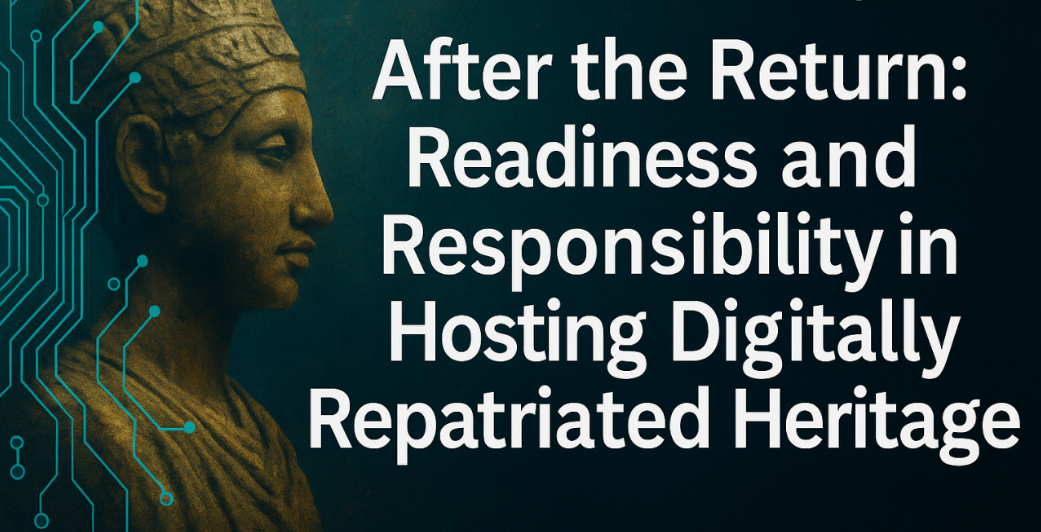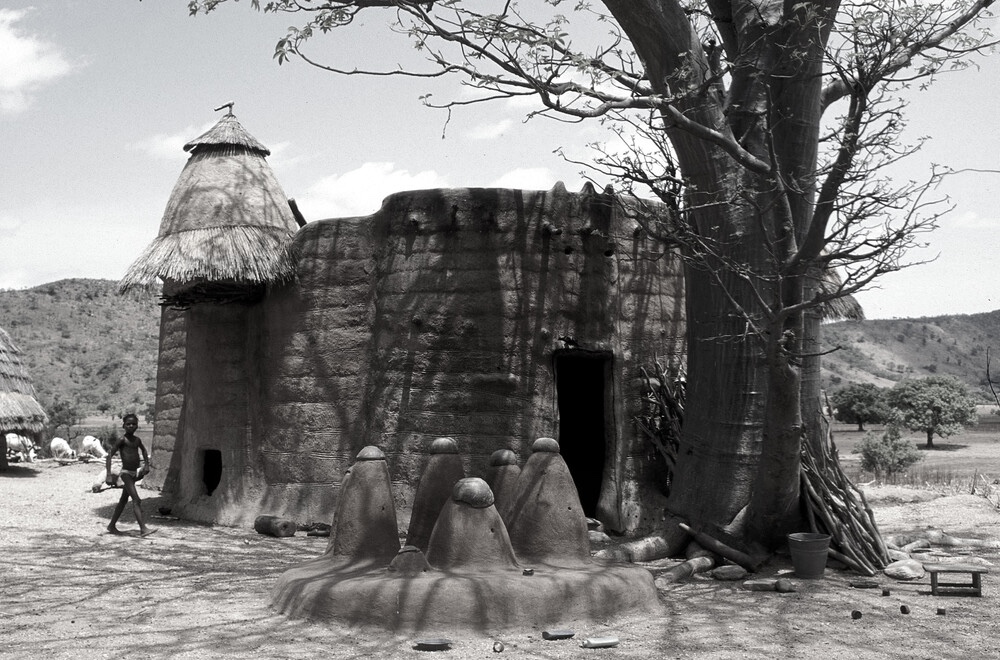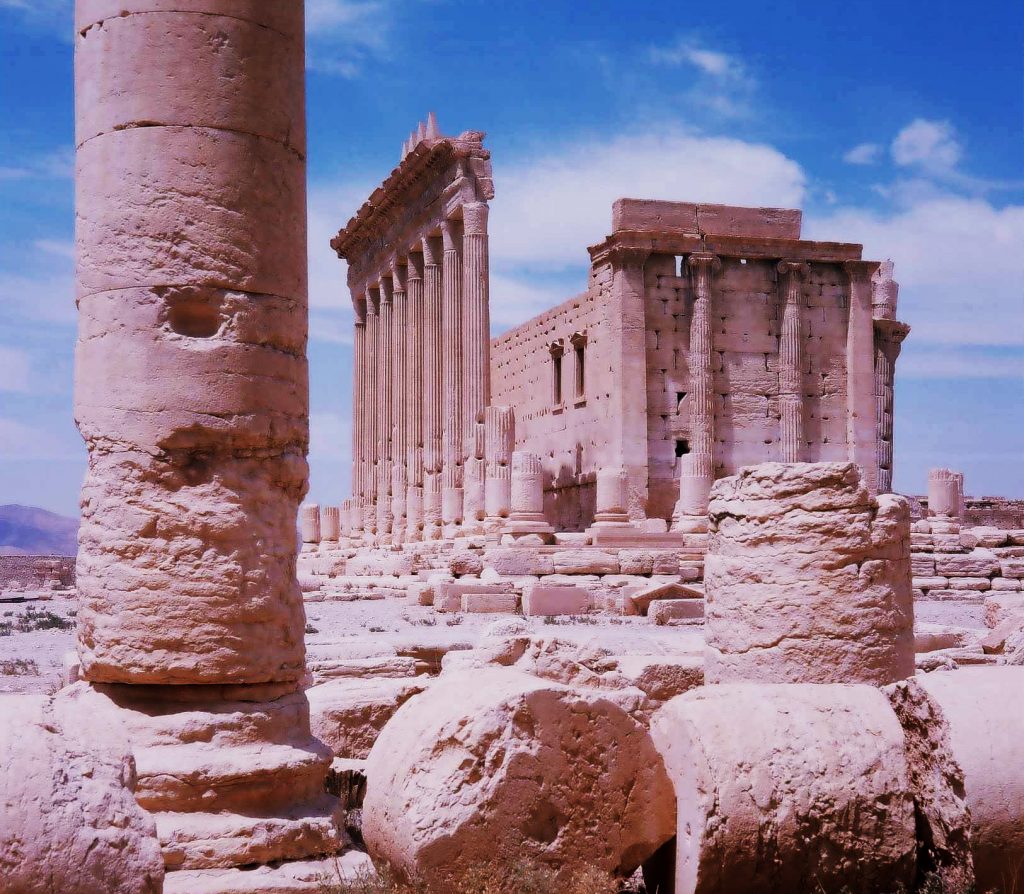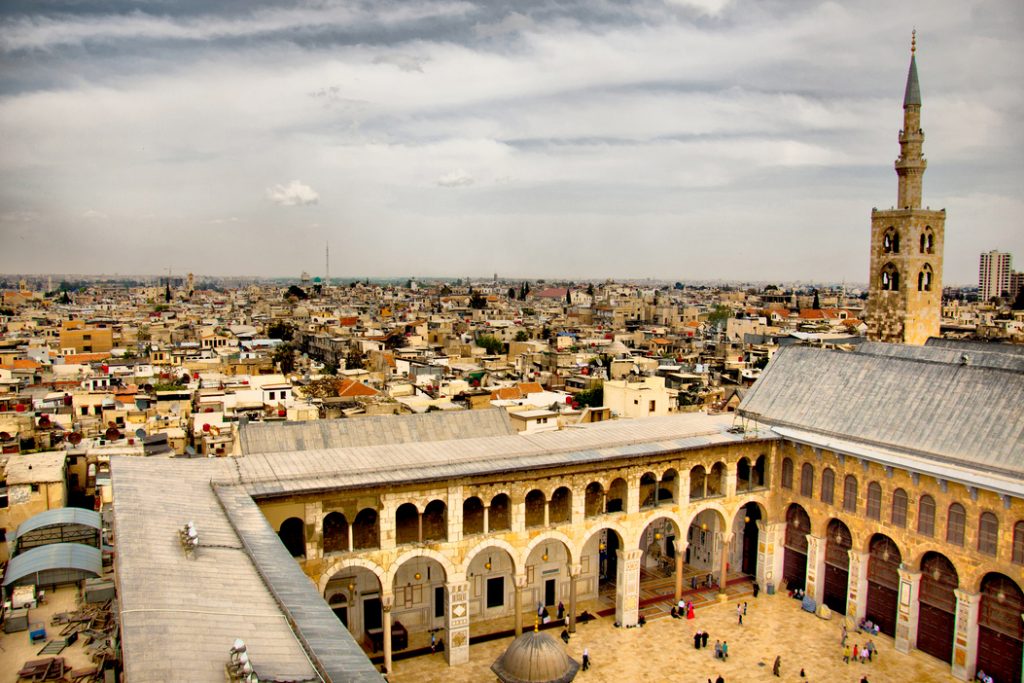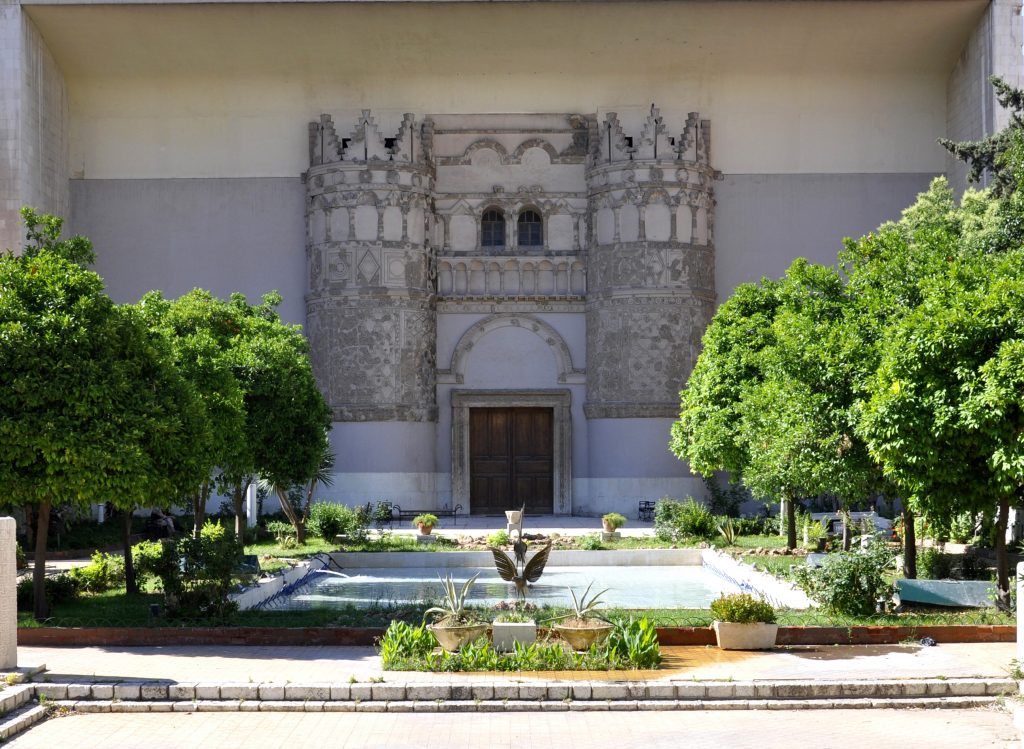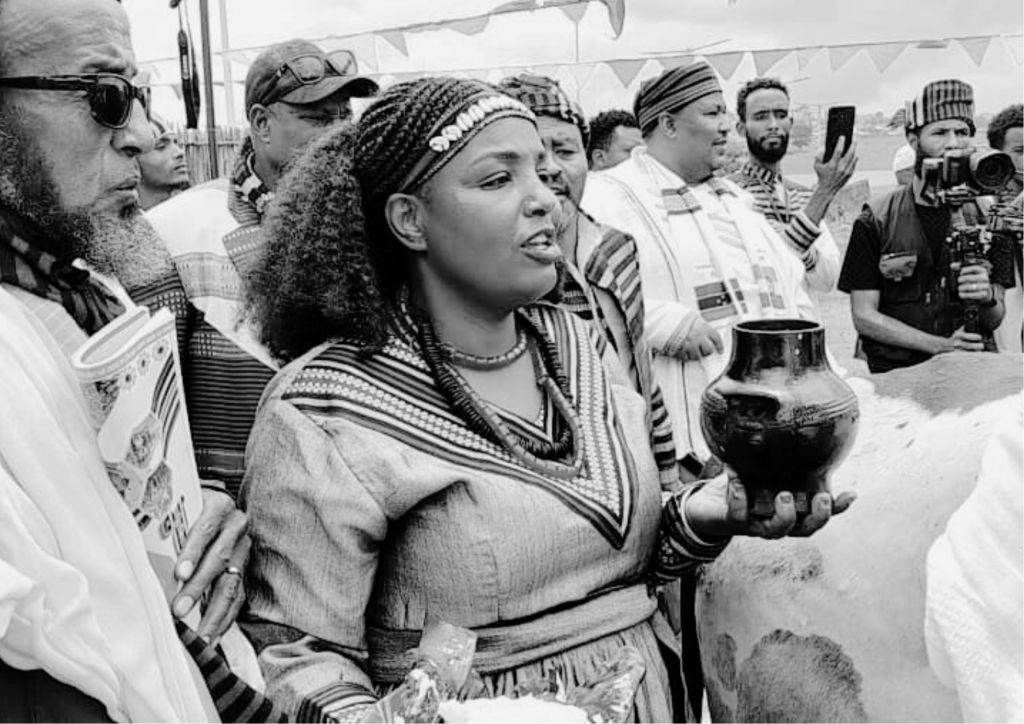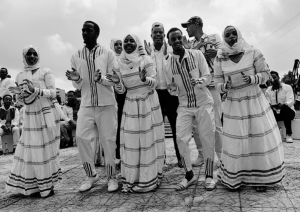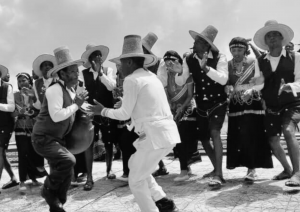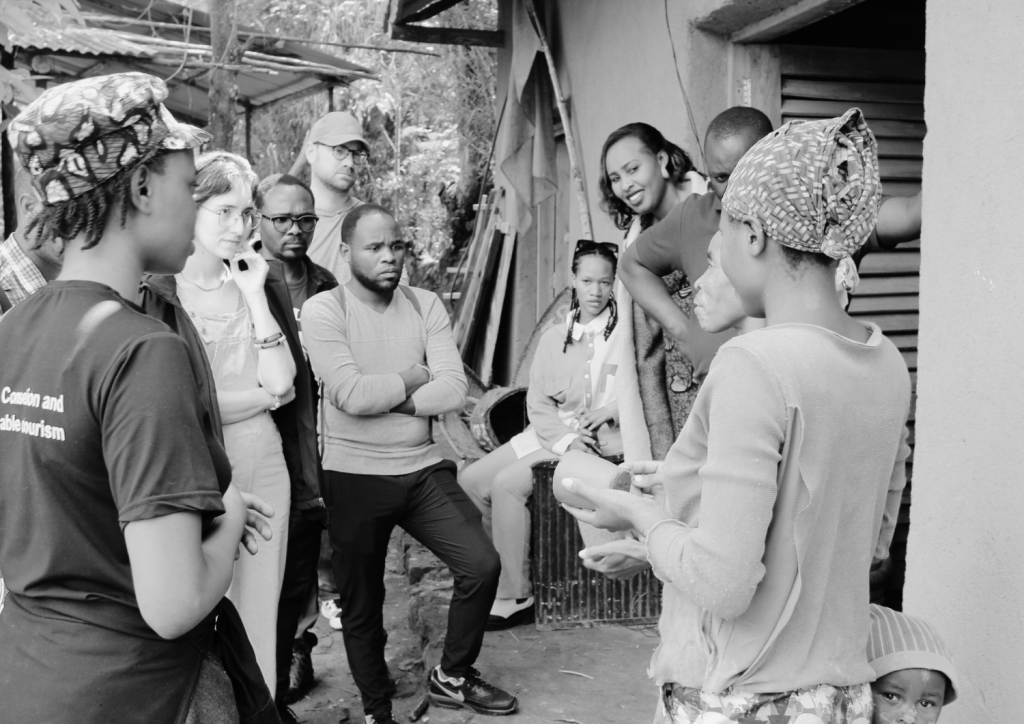: Opinion pieces
After the Return: Readiness and Responsibility in Hosting Digitally Repatriated Heritage
* By Ahmad Mohammed, PhD Researcher, Department of Archaeology, Durham University
In the previous article “Beyond Access: Rethinking Ownership, Justice, and Decolonization in Digital Repatriation Initiatives“, I have examined the conceptual landscape of digital repatriation, highlighting both the empowering potential and colonial pitfalls of returning cultural heritage in digital form. This follow-up extends that inquiry by addressing a critical, often overlooked dimension: the readiness of source countries and communities to host, govern, and sustain digitally repatriated heritage.
While digital repatriation offers an alternative or complementary pathway to physical restitution, its success hinges not only on ethical intent or technological innovation but on the socio-technical infrastructure available to source communities. This article examines this issue through three key lenses: infrastructural readiness, governance and capacity, and cultural sustainability. In doing so, it critiques the assumption—sometimes implicit in institutional discourse—that access alone constitutes justice.
- Digital Return Without Digital Sovereignty?
Many digital repatriation initiatives remain predicated on the assumption that “returning” digitized copies is enough. Yet, without adequate resources, platforms, or autonomy in hosting those digital materials, such returns may replicate the asymmetries of physical colonial collecting.
For instance, The Inuvialuit Living History Project (Hennessy et al., 2013) was rightly celebrated for its collaborative structure. However, the project relied heavily on external academic platforms and funding mechanisms, raising long-term questions about sustainability and control. Who maintains these systems when grant funding ends? What happens when a server is taken offline or institutional priorities shift?
Similar concerns were voiced by Carlton (2010), who found that while Native American communities expressed strong interest in digital stewardship, they often lacked the infrastructure—both technological and human—to manage repatriated materials without ongoing support. This reflects a broader digital divide that continues to define the global heritage ecosystem (Smith & Ristya, 2023).
- Infrastructure: The Weak Link in Decolonial Aspirations
Digital repatriation often presumes the existence of stable internet access, secure data servers, digital preservation strategies, and metadata expertise. In practice, such conditions are far from universal.
Even in well-resourced cultural institutions within source countries, digital infrastructure may be centralized, bureaucratically constrained, or misaligned with local epistemologies. For Indigenous and rural communities, the gap is even more acute. Shepardson et al. (2019) note that while Rapa Nui youth were engaged in digital mapping and archival training, technical constraints repeatedly limited project continuity.
Further, as Barwick (2004) cautioned, there is no one-size-fits-all model for digital repositories. “Community archives” must reflect the specific needs and values of those communities. Off-the-shelf solutions or externally hosted databases rarely offer this flexibility, and may embed Western norms of access, hierarchy, and categorization.
Mukurtu, an open-source CMS built with Indigenous communities, is one of the few platforms to address this issue explicitly by allowing users to create “cultural protocols” for access. Yet even Mukurtu, despite its affordances, requires ongoing technical capacity—training, updates, and hosting—that many communities are not funded or trained to sustain (Krupa & Grimm, 2021).
- Governance and Institutional Commitment
Even when infrastructure exists, governance structures for digital repatriation are often absent or insufficient. Who decides what is digitized? Who approves public access? How are sacred, gendered, or restricted materials managed?
Leopold (2013) warned that even collaborative efforts risk collapsing under institutional inertia if power is not equitably distributed. The question, then, is not just whether communities can host digital heritage—but whether they are empowered to govern it under their own laws, customs, and knowledge systems.
There is also the issue of dependency. Projects like the Sípnuuk digital library, developed by the Karuk Tribe (Tribe et al., 2017), demonstrate that community-owned platforms are possible. But they are rare. Without structural changes in funding models, most digital repatriation efforts will remain tethered to the institutions that initially dispossessed the materials.
Thus, readiness is not merely technical—it is political and legal. It is about sovereignty over data, not just access to it.
- Readiness as a Moving Target
One of the key insights emerging from recent literature is that readiness must be understood relationally—not as a fixed state, but as a collaborative, evolving process. Communities may not begin with the infrastructure to host a digital archive, but can develop it through sustained, respectful partnerships.
Jennifer O’Neal (2013) emphasized the need for “temporal flexibility” in such collaborations. Timelines driven by institutional deliverables often clash with community-centered pacing. Likewise, community readiness cannot be imposed from the outside—it must be nurtured through trust-building, consultation, and co-creation.
The readiness of source countries also varies at the national level. Some governments have national digitization strategies and heritage ministries with strong technical capacity. Others—especially in post-conflict or low-income contexts—lack even basic archival systems. In such cases, digital repatriation risks deepening inequities unless accompanied by state-level investment in cultural infrastructure.
- The Illusion of Reversibility: Digital Fragility
One of the unspoken myths of digital repatriation is its supposed reversibility. Unlike physical repatriation, which is permanent, digital files can be duplicated, stored, or deleted with ease. But this is both a strength and a weakness.
The impermanence of digital formats, combined with the volatility of online platforms, makes digital heritage vulnerable to obsolescence, cyberattacks, or institutional neglect. Without redundant backups, maintenance plans, and clear governance, returned digital heritage can easily be lost—sometimes more quickly than it was ever accessible.
Digital fragility also exposes legal and ethical loopholes. Institutions may remove digital access without explanation. They may alter metadata, remap URLs, or archive collections under different taxonomies. Such risks are often invisible to the public but acutely felt by communities (Oruç, 2023).
- Toward a Readiness Index: What Does It Take?
Given the multi-dimensional nature of readiness, there is a growing need to develop a readiness index for digital repatriation—similar to frameworks used in international development or public health.
Such an index might include:
- Technical infrastructure: internet bandwidth, server capacity, digital security
- Institutional readiness: presence of cultural institutions, funding streams, IT departments
- Community governance: mechanisms for access control, cultural protocol management
- Policy environment: national laws on IP, cultural heritage, and Indigenous rights
- Capacity-building mechanisms: training, mentorship, language accessibility
A readiness index would not be a gatekeeping tool, but a diagnostic one—allowing all parties to assess strengths, identify gaps, and co-create realistic timelines and support strategies.
Conclusion: Toward Relational and Contextual Readiness
Digital repatriation is not a matter of merely “giving back” digital files. It is a complex, relational, and infrastructural act that must be grounded in long-term partnerships, not one-off transfers. For source countries and communities to be truly “ready,” they must have not only the technical means but the authority, governance, and cultural frameworks to host and care for their digital heritage.
Institutions in the Global North must recognize their role not just as holders of collections, but as co-conspirators in decolonial repair. Readiness, in this sense, is not about ticking boxes—it is about co-building futures. As repatriation expands into the digital realm, the ethical questions grow more intricate, but so too does the potential for shared sovereignty, cultural revitalization, and relational accountability.
References
- Barwick, L. (2004). Turning It All Upside Down… Imagining a digital community archive for endangered cultural heritage. Literary and Linguistic Computing, 19(3), 253–263. https://doi.org/10.1093/LLC/19.3.253
- Carlton, K. (2010). Native American Material Heritage and the Digital Age.https://deepblue.lib.umich.edu/bitstream/handle/2027.42/77643/carltonk.pdf?sequence=1&isAllowed=y
- Hennessy, K., Lyons, N., Loring, S., Arnold, C., Jones, A., & Beaudoin, L. (2013). The Inuvialuit Living History Project. Museum Anthropology Review, 7(1), 44–73. https://hennessy.iat.sfu.ca/mcl/wordpress/wp-content/uploads/2013/11/03_Hennessy-et-al-MAR-2013.pdf
- Hillman, L. J., Hillman, L., Harling, A., Talley, B., & McLaughlin, A. (2017). Building Sípnuuk: A Digital Library, Archives, and Museum for Indigenous Peoples. Collection Management, 42(3–4), 294–316. https://doi.org/10.1080/01462679.2017.1331870
- Karuk Tribe, Hillman, L., Hillman, L., Harling, A. R. S., Talley, B., & McLaughlin, A. (2017). Building Sípnuuk: A Digital Library, Archives, and Museum for Indigenous Peoples. Collection Management, 42(3–4), 294–316. https://doi.org/10.1080/01462679.2017.1331870
- Krupa, K. L., & Grimm, K. T. (2021). Digital Repatriation as a Decolonizing Practice in the Archaeological Archive. Across the Disciplines, 18(1/2). https://wac.colostate.edu/docs/atd/volume18/Krupa,Grimm.pdf
- Leopold, R. (2013). Articulating Culturally Sensitive Knowledge Online. Museum Anthropology Review, 7(1), 85–104. https://scholarworks.iu.edu/journals/index.php/mar/article/view/2051
- O’Neal, J. R. (2013). Going Home: The Digital Return of Films. Museum Anthropology Review, 7(1), 166–184. https://scholarsbank.uoregon.edu/server/api/core/bitstreams/da6092a1-95c5-4708-9219-7fe38e48c9dd/content
- Oruç, P. (2023). Who Holds Copyright in 3D Copies of Repatriated Cultural Heritage? Kluwer Copyright Blog. https://copyrightblog.kluweriplaw.com/2023/01/05/who-holds-copyright-in-3d-copies-of-repatriated-cultural-heritage/
- Shepardson, B. L., et al. (2019). Terevaka Archaeological Outreach (TAO) 2019 Field Report. Rapa Nui Journal, 32(1), 118–134. https://muse.jhu.edu/pub/5/article/753173/pdf
- Smith, E. C. H., & Ristya, R. (2023). Protection and Repatriation of Cultural Heritage: Digital Access and Indigenous Rights. https://eprints.gla.ac.uk/301264/1/301264.pdf
What Future for Sacred Places in the Age of Climate and Virtuality?
By Ibrahim Tchan,
Climate change does not only erode landscapes or materials. It threatens gestures, rituals, stories—what binds people to their territories, to their ancestors, to their sense of belonging. In the face of this, should we simply document, archive, observe the loss? Or should we begin to invent new forms of presence, capable of extending the breath of heritage where the ground becomes unstable, practices disperse, and memory fades?
This is exactly the path we are currently walking with the Takienta, the ritual dwelling of the Batammariba people, in the Koutammakou region (Benin/Togo).
We are actively engaging in a multi-layered process using virtual reality, 3D modeling, photogrammetry, telepresence, augmented reality, and now drone-assisted AI for inventory and sacred landscape mapping.
But our aim is not to freeze this living architecture in pixels. It is to make it accessible in new ways, to enable active transmission, especially where collapsing soils, displacement, or disrupted rhythms make ritual continuity difficult.
We are working to ensure that initiation rituals like the Dikuntri (for girls) and the Difuani (for boys) can still be felt, understood, and experienced—even remotely, even tomorrow—in a world where physical presence may no longer be possible, but where spiritual connection can be reimagined. This is no longer just about preserving form, but about ensuring that communities—especially younger generations—can continue to “inhabit” their heritage, making it a living resource in an uncertain world.
This approach raises critical questions:
➡ How can digital tools become instruments of cultural adaptation, not substitution?
➡ What ethical, inclusive, and grounded models can guide us in this transition?
➡ Which stories, practices, and examples should we be sharing—urgently?
We offer this not as a finished solution, but as an open invitation to explore, test, and co-create. To engage in cross-disciplinary collaboration, to rethink how we care for what matters most. Because heritage does not preserve itself. It must be carried, transformed, retold—together. And if the tools of tomorrow can help honor the memory of our origins, then it is up to us to use them with care, clarity… and commitment.
*Ibrahim Tchan is a Heritage and Climate Change Specialist Researcher/Project Manager working in Benin
Embracing Technology in Cultural Heritage: Overcoming Barriers to Engagement and Accessibility
By Maria Kagkelidou
As cultural heritage institutions around the world grapple with the task of preserving our past, an exciting opportunity is emerging: technology. From virtual reality (VR) tours and augmented reality (AR) displays to artificial intelligence (AI) and haptic feedback, the tools available to make heritage more engaging and accessible are growing at a rapid pace. At the heart of this shift lies the potential to not only enhance visitor experiences but also address longstanding challenges such as accessibility and audience engagement.
As a participant in the SHIFT project, I’ve had the privilege of analyzing key survey results from both cultural heritage professionals and the general public. These surveys highlight the promise of new technologies, but they also underline the barriers that remain—barriers that need to be tackled to truly realize the potential of technology in the cultural sector.
The Promise of Digital Technologies
The results from our SHIFT survey of cultural heritage professionals reveal that many institutions are embracing technologies like AI, VR, and AR to increase their appeal and accessibility. With these tools, institutions are transforming the traditional museum visit into a dynamic, interactive experience. Visitors can now walk through virtual reconstructions of ancient civilizations, experience interactive 3D models of priceless artifacts, or participate in immersive educational games.
The general public survey, also part of the SHIFT initiative, further confirms this shift. When asked what would make them more likely to visit museums and cultural sites, a significant majority of younger respondents (aged 18–34) said that interactive, technology-driven experiences such as VR or AR would encourage them to engage more with cultural heritage. These technologies can bridge the gap between a traditional, static experience and a more dynamic, immersive one that speaks to today’s digital-native generations.
For institutions, the opportunity to create more inclusive spaces is equally promising. Through AI-powered accessibility tools such as text-to-speech for visually impaired visitors or haptic technologies that allow users to “feel” digital representations of artifacts, museums are making their collections available to broader audiences. These technologies, which were once considered futuristic, are now seen as essential for enhancing the inclusivity of cultural institutions.
Barriers to Widespread Adoption
Despite the optimism around digital transformation, the SHIFT surveys also shed light on the significant barriers preventing more widespread use of technology within cultural heritage institutions. Budget constraints were the most frequently cited challenge, with 57% of respondents reporting that limited financial resources were a key obstacle to adopting new technologies. Initial costs, as well as the need for ongoing maintenance and infrastructure upgrades, are particularly burdensome for smaller institutions.
In addition to financial concerns, lack of technical expertise remains a crucial barrier. Many institutions report that they simply do not have the in-house capabilities to implement or maintain advanced digital tools. This challenge is especially evident in smaller, less resourced institutions, which often do not have dedicated IT departments or staff with specialized training in digital tools.
There is also a degree of institutional inertia. The cultural sector can be slow to change, with some professionals expressing concern that technology might undermine the authenticity of cultural experiences. The survey results showed that about 33% of respondents felt that the introduction of advanced technologies might detract from the physical connection to artifacts or undermine the traditional, “hands-on” museum experience that many visitors still value.
Opportunities for Change
Despite these barriers, the SHIFT project continues to push forward with the belief that technology can be an enabler, not a disruptor, of cultural heritage. To address these challenges, the survey results suggest that there are several actions we can take to help institutions embrace digital transformation more effectively:
- Increased Funding Support: Public and private funding needs to be expanded, especially for smaller institutions. This can include targeted subsidies or shared funding models to make technology adoption more affordable.
- Training and Capacity Building: Cultural heritage professionals must be equipped with the technical skills to successfully implement and use these technologies. The SHIFT project has already initiated training programs aimed at increasing digital literacy within the sector.
- Collaborative Efforts: Cross-institutional collaboration should be encouraged to share resources, knowledge, and digital tools. This can be particularly helpful for smaller institutions that may lack the financial or technical means to go it alone.
- Inclusive Design: As the SHIFT surveys showed, the desire for inclusive experiences is high, and digital tools are uniquely positioned to meet the needs of diverse audiences. Institutions must continue to prioritize accessibility—from providing virtual tours for those unable to travel to offering multisensory experiences for people with disabilities.
A Bright Future for Cultural Heritage
The SHIFT project is driven by the ambition to make cultural heritage more accessible, inclusive, and engaging for all. The survey findings clearly show that while the appetite for technology is strong, the sector must work together to break down the barriers preventing its wider adoption. Through collaboration, investment, and training, the cultural heritage sector can harness the power of technology to create richer, more inclusive experiences that will attract new audiences and better preserve our shared history for generations to come.
The road ahead may be challenging, but the potential is undeniable. As institutions continue to embrace digital transformation, the future of cultural heritage looks not just more interactive and inclusive, but more dynamic and engaging than ever before.
Syrian Antiquities Breathe, but amid the Threat of Metal Detectors
By Khaled Hiatlih
Over the past decade, Syrian news has been filled with sorrowful reports of looting, destruction, and random shelling. The situation worsened when terrorist groups took control and carried out large-scale demolitions—most notably, the bombing of landmarks in the ancient city of Palmyra.
Since the fall of the brutal al-Assad regime in December 2024, Syria has entered a new phase filled with both challenges and hope for restoring its cultural and archaeological heritage. This heritage is a vital part of the Syrian people’s national identity and rich history, yet it has suffered from over 14 years of conflict, neglect, and destruction. This article reviews the current state of Syrian antiquities, the changes following recent political shifts, and the prospects for the future under the new administration.
Just two months after the brutal regime’s collapse, public spaces across Syria have become hubs of activity. Diplomatic efforts and political moves are underway to build a new state based on justice and equality, with the new administration embracing tolerance and moving past old divisions.
This renewed principle extends to the cultural heritage sector as well. Efforts are now underway to restructure this field, and the new administration’s keen interest is evident from the recent phases of liberation—starting from the northern regions toward Aleppo and then moving southward toward the capital, Damascus. In these areas, what was known as the Military Operations Administration has actively worked to protect Syrian museums and archaeological sites by deploying special forces to guard museums and other significant buildings in the liberated cities. Subsequently, a specialized director was appointed to lead the General Directorate of Antiquities and Museums and manage the sector, even though the position of Minister of Culture remains vacant—a clear indication of the special attention being paid to the cultural heritage sector.
Despite the general atmosphere of optimism—fueled by these administrative steps taken by the new government to support and enhance the museum and archaeological sectors—many reports paint a discouraging picture of the archaeological sector in different parts of the country. One major concern is the rising use of metal detectors for finding precious metals. These devices, which were once banned under the fallen regime, are now widely advertised on social media in various specifications and types. Consequently, some groups or individuals, driven by the lure of quick wealth, have hastily begun using these devices, and their use is spreading—particularly in the central and southern provinces.
Confirmed reports show a surge in illegal digging for gold using these devices in areas such as the countryside of Hama, northern Aleppo, the Damascus countryside in Eastern Ghouta, and further south in the provinces of Daraa and Quneitra. These reports harken back to the peak period of looting and indiscriminate excavation that afflicted Syrian cultural heritage sites during 2013–2014—in cities like Apamia, Mari, and Dura-Europos—where every meter of these ancient sites was ravaged. Many of these sites, are already on the World Heritage List or being considered for it, prompting UNESCO in 2013 to reclassify all registered Syrian sites onto the “List of World Heritage in Danger.” This list includes the cities of Damascus, Aleppo, Palmyra, Bosra, Qal’at al-Hosan, Saladin, and the so-called “Dead Cities” in northwestern Syria.
Regarding violations against museums, most incidents occurred during the early days following the collapse of the fallen regime, particularly in Syria’s coastal provinces. In Tartus, for instance, the Tartus Antiquities Directorate building was stormed—the doors were smashed and equipment stolen—although the museum itself remained guarded. Similarly, at the citadel of Arwad island, a break-in led to the theft of 38 archaeological artifacts and equipment. In the citadel of Al-Maraqib, the visitor center was breached, showcases were smashed, and various items were stolen. In the ancient Phoenician city of Amrit, illegal excavations have reportedly looted the tombs area.
Moving from the west to the far east of Syria, the transition of power took on a harder tone, although it also saw widespread looting and pillaging of all government institutions in the city of Deir ez-Zor following the withdrawal of the fallen regime’s forces and the subsequent takeover by the Kurdish Syrian Democratic Forces. In response, we—as volunteers—assembled a team to protect the museum and prevent theft or arson from affecting its buildings and warehouses, and fortunately, we succeeded.
The Deir ez-Zor National Museum, which once housed more than 21,000 archaeological artifacts, now finds itself in a critical state due to the ravages of war and neglect. Although most of its collections were safely transferred to Damascus during the crisis, the museum’s infrastructure is rapidly deteriorating. Damage is evident in broken windows and malfunctioning drainage systems that allow water to seep into the walls and foundations, as well as in the exhibition halls that have remained closed since 2012—displaying clear signs of neglect, with cracks in the roof, shattered windows, and remnants of display decorations or ornamental pieces left exposed to dust. The warehouses have been closed for years, and the condition of the stored archaeological and pottery pieces is unknown, given that the museum was previously used as a base by the forces of the fallen regime and by Iranian militias active in the area, not to mention the existence of several tunnels around the building.
The Damascus National Museum—considered the crown jewel of Syrian museums, the largest and richest in terms of artifacts and archaeological collections—is currently secure despite attempts by thieves to breach it on the night of the regime’s collapse. Thieves entered from the museum’s parking area beneath the building, triggering minor fires that were quickly brought under control thanks to the efforts of the guards and staff; however, all vehicles belonging to the Antiquities Directorate were stolen. Security personnel are now stationed at the museum to ensure its protection, and the visitors are permitted to access the museum’s garden and its outdoor exhibits.
The triumph of the Syrian revolution stands as one of the most significant events in contemporary Syrian history—a development that has touched all Syrian citizens and even extended its impact to neighboring and regional countries. Transitioning from the dark era of the Assad family’s rule, which lasted more than 50 years, to a state of normalcy—especially in the cultural heritage sector—is a challenging process in practical terms, given the numerous obstacles it faces. Issues such as weak national and international funding, a shortage of qualified personnel for reconstruction projects, and the loss of many vital documents and records have slowed this transition somewhat. Nevertheless, it is heartening that the events of the regime’s fall exceeded expectations and were far more positive than those in neighboring countries. This success provides a firm foundation upon which to rebuild the antiquities sector through the concerted efforts of Syrians both within and outside the country—a process that is already underway. The General Directorate of Antiquities and Museums is now holding intensive, regular meetings with specialists and archaeologists from various segments of society, both in Syria and abroad, to mobilize efforts and develop a comprehensive strategy for reviving the antiquities sector and addressing the significant challenges that require both national and international support.
Khaled Hiatlih is a Near Eastern archaeologist and cultural heritage specialist with 15 years of experience in the archaeological field in Syria. He has participated in many international projects and led initiatives specializing in cultural heritage documentation and the digitization of cultural properties and museum archives. Khaled has worked on heritage projects across Syria, including the rehabilitation of the Folk Museum (Azem Palace) in Damascus and the Syrian Mosaics Documentation Project.
Dedicated to the preservation of Syrian cultural heritage, Hiatlih has been tracking the illicit trafficking of Syrian archaeological artifacts and documenting the damage to Syrian heritage since the crisis started and has participated in cultural initiatives to raise public awareness and protect endangered Syrian heritage as a part of global human heritage.
Yahode Festival: Beacon for peace, reconciliation, and renewal in Ethiopia
Written by: Habtamu Gizawu Tola & Xanthippi Kontogianni
Ethiopia’s rich cultural landscape is a testament to its diverse heritage, and the Yahode festival stands as one of the most vibrant expressions of this legacy. Celebrated annually by the Hadiya people in the Central region, Yahode marks the New Year and is a significant Thanksgiving event, embodying the values of peace, reconciliation, and renewal. More than just a cultural celebration, Yahode offers organizations like the Heritage Management Organization a unique opportunity to forge connections with local stakeholders, assess the needs of Ethiopia’s heritage sector, and enhance heritage management capabilities in a meaningful way.
At the heart of Yahode is a powerful transition—from the darkness of the old year to the brightness of the new—imbued with forgiveness, gratitude, and the promise of fresh beginnings. This festival is a living symbol of unity and social cohesion, critical to the preservation of cultural heritage and the promotion of sustainable development. It showcases both the tangible and intangible aspects of Hadiya culture, from intricately decorated clothing and traditional cuisine to ritual prayers, conflict resolution systems, and dynamic performances of traditional songs. Yahode encapsulates the essence of living heritage, offering a snapshot of the values and practices that define the Hadiya community.
The festival begins with “Atakana Night,” a symbolic eve of transformation marked by cultural bazaars, panel discussions, community dialogues, and fashion shows. This gathering involves a broad spectrum of participants, from local community members and cultural organizations to government stakeholders, all contributing to the festival’s dynamic atmosphere. Following the eve, the main day of Yahode unfolds with a solemn blessing and prayer ceremony led by elders, giving thanks for the past year and seeking peace and unity for the year ahead. Traditional songs and dances performed by youth groups, alongside the Damara (Tomora) ceremony—where decorated firewood is blessed and burned to symbolize new beginnings—enrich the celebration. The day culminates in the ceremonial slaughtering of a specially selected ox, its meat shared among participants, reinforcing community unity and collective celebration.
The Yahode festival represents far more than a celebration of heritage; it is a microcosm of the social, economic, and spiritual fabric of the Hadiya people. The active participation of the Heritage Management Organization, represented by Habtamu Gizawu Tola (focal person of HERITΛGE in Ethiopia), at the Yahode festival on September 27-28, 2024, provided an invaluable platform for achieving two key objectives: building robust networks with stakeholders and gaining a deeper understanding of the local heritage sector’s strengths and needs. Engaging in such cultural events is crucial for organizations seeking to not only preserve heritage but also integrate it into broader developmental goals. By embedding itself in the cultural life of Ethiopia’s communities, the Heritage Management Organization can play a transformative role in ensuring that Ethiopia’s rich heritage continues to drive social and economic progress, fostering a future where cultural legacy and modern development walk hand in hand.
*Habtamu Gizawu Tola is HERITΛGE’s focal representative in Ethiopia and has also taken the photos featured here. Xanthippi Kontogianni is the organization’s Ethiopia Heritage Manager.
A New Partnership with Red Rocks Rwanda
By Eirini Oikonomidi*
This summer, HERITΛGE took a significant step forward in fostering sustainable cultural tourism in Rwanda by signing a Memorandum of Understanding (MoU) with Red Rocks Rwanda. This collaboration is not only a strategic alliance but also a heartfelt recognition of the inspiring work of Red Rocks’ founder, Gregory Bakunzi.
Red Rocks Rwanda has carved out a unique space in the world of eco-tourism by seamlessly blending adventure with culture. Located in the Musanze region, a place renowned for its tourism potential, Red Rocks offers travelers the opportunity to experience both nature and community, from gorilla trekking to cultural exchange. However, what makes Red Rocks truly special is its deep commitment to community empowerment, environmental conservation, and the preservation of Rwanda’s rich cultural heritage.
At the heart of this vision is Gregory Bakunzi, whose leadership has been instrumental in transforming the region’s tourism landscape. His passion for conservation and community development has made Red Rocks a model for sustainable tourism, where the benefits of tourism flow directly to the local population.
I met Greg for the first time when I visited Rwanda in November 2023. Our collaboration began when we made the strategic decision to hold a workshop in the Musanze region, an area with significant tourism interest. Thanks to Greg’s willingness and cooperation, we successfully organized the three-day workshop at Red Rocks. During our time there, we not only enjoyed the warm hospitality of the staff but also had the opportunity to witness firsthand the incredible work being done at Red Rocks.
This first encounter laid the groundwork for a fruitful partnership. What started as a professional collaboration soon grew into a personal friendship, further solidified by the formal signing of the MoU during a subsequent visit in July 2024.
Rwanda is blessed with a rich and diverse but still largely undiscovered cultural heritage that can help the country flourish in the coming years, ensuring it’s economy grows in a sustainable way that benefits its communities. At HERITΛGE we hope our partnership with Red Rocks Rwanda is the first of many steps along this route.
*Eirini Oikonomidi is HERITΛGE’s Rwanda Project Manager

